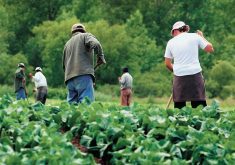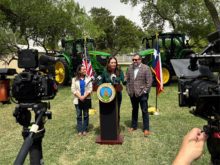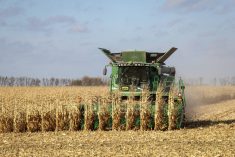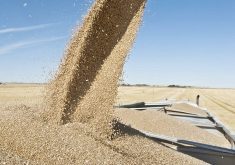Federal climate cash is flowing out the door and being put to work on rotational grazing, cover cropping or nitrogen management projects on Alberta farms.
Read Also

The long march to autonomy
The big players in the machinery market keep adding pieces towards autonomous vehicles for farming, but how far away is a final product?

“We’ve been out on a couple of farms to see projects and talk to people,” said Fiona Briody, program manager for RDAR (Results Driven Agriculture Research). “There are just really great projects, great people, and they’re excited about the opportunities this brings them.”
Ottawa is putting $200 million into the On-Farm Climate Action Fund to promote practices that lower greenhouse gas emissions and store carbon.
The program will cover 85 per cent of project implementation costs, up to $75,000 per farm. RDAR, the provincial agency for ag research funding, will be handing out $33 million of that money.
As of Oct. 7, 58 applications had been approved and 60 were under review, a process that takes about a week. Another 354 applications were at some stage in the online application process. The deadline for the first round of applications is Nov. 7, with the next round opening in February. The first set of projects must be completed (with invoices submitted) by the start of 2023.
“There’s lots of room,” said Briody. “I would strongly encourage anyone who has a project to put their application in. There are still plenty of funds to disperse, and we’re happy to look at any applications.”
Many more are expected once harvest wraps up but cover crops were a popular choice in the first batch.
“There’s a lot of interest in cover crops,” she said. “There are quite a few cover crops put in on beans and specialty crops down south. Soil erosion has been a concern (there) in the last few years.”
Many producers have told her they’ve had these types of projects on their to-do list for a long time, but haven’t had the opportunity or funds to do it. They have clear goals and that’s reflected in the applications, said Briody.
“People have done a really good job of putting their applications together and really being clear on what they’re trying to achieve.”
The application process can seem intimidating and must be done online, but the web-based application simplifies it, said Briody. RDAR’s website has explainers, videos and “a lot of details in our program on what is eligible and what’s not, and what they can do.
“When you are first learning about it, it seems like there’s a lot of information to wade through,” she said. “But when people see our webpage, they’re really happy with the explanation and the details we have there.
“Generally, I think most farmers can find something in this program that they can do.”
Applications have come from every size and type of farm and from all over the province.
The program also has components to train producers, as well as provide knowledge and tech transfer activity.
“We are working through agreements with 11 applied research and forage groups across Alberta that will deliver peer-to-peer learning, workshops and field days through all these categories, so people can watch for those,” Briody said.
Certified crop advisors and professional agrologists are being trained via a joint program by Lakeland and Olds colleges to help producers with their projects. Advisors can get paid if they help with an application.
“Reach out to our program to get assistance for that. We don’t want the technology of applying online to be a barrier,” she said.
The organization’s phone number is 1-877-503-5955.
Producers can make multiple applications across different categories.
“If you have a $30,000 project this year and a $30,000 project next year, just make two applications,” Briody said.
Two other organizations are also taking applications from producers in Alberta but only for one part of the program. The Canadian Forage and Grassland Association is dealing with rotational grazing applications in four provinces, while the Canola Council of Canada will distribute $22 million for nutrient management projects in the three prairie provinces.
















